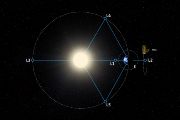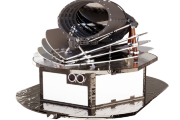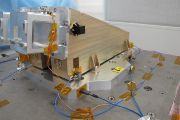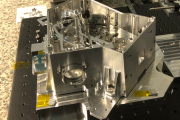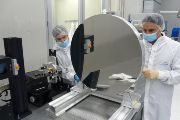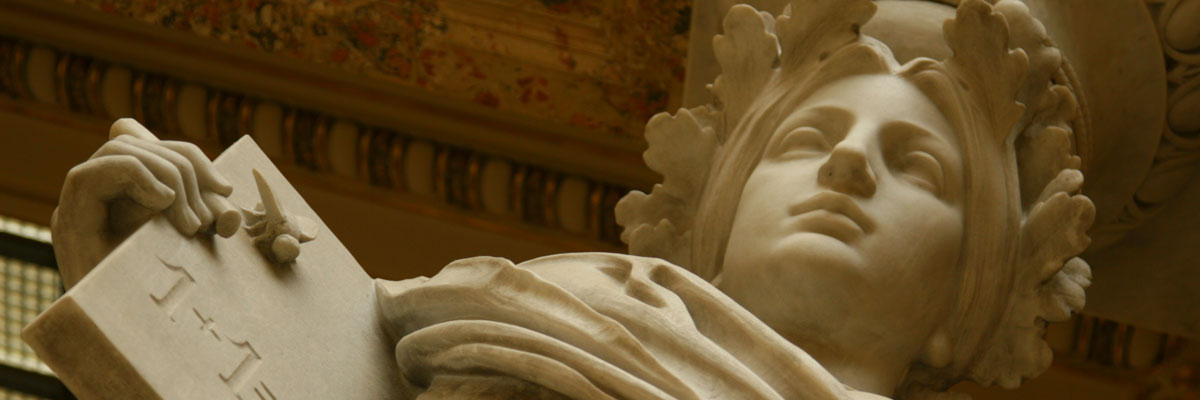
Ariel passes major milestone
03. 08. 2023
Ariel, the European Space Agency’s next-generation mission to observe the chemical make-up of distant extrasolar planets, has passed a major milestone after successfully completing its Preliminary Design Review (PDR). The successful completion of the PDR marks a crucial step forward for Ariel, demonstrating that the mission's payload design meets all the required technical and scientific specifications, and no showstoppers were found for the foreseen launch in 2029.
Over the course of nine months the Ariel consortium payload team prepared 179 technical documents and addressed 364 questions (RIDs) for a panel of ESA experts, who evaluated the feasibility, performance, and robustness of the payload design. The review scrutinised every aspect of the proposed payload, to ensure that the designed systems meet the technical, scientific, and operational requirements of the mission. In May 2023 the ESA review board accepted that all the objectives had been completed, and confirmed the successful closure of the Ariel payload PDR.
As a result of this major achievement, Ariel's payload critical technology is now considered at Technical Readiness Level 6, indicating that the mission can now proceed to payload CDR (Critical Design Review) and begin to manufacture its first models.
Paul Eccleston, Ariel Consortium Manager and Chief Engineer at RAL Space, is very pleased with the outcome and has thanked the international payload team engineers "for the enormous amount of work they’ve put in both before, during and after the payload PDR, especially while also keeping all the consortium work on track and the internal design work to plan.”
The Ariel payload is developed by a consortium of more than 50 institutes from 16 ESA countries – which include the UK, France, Italy, Poland, Belgium, Spain, Austria, Denmark, Hungary, Portugal, Ireland, Czech Republic, the Netherlands, Norway, Sweden, Estonia. Contributions from NASA, JAXA and the Canadian Space Agency have recently been confirmed.
National Space Agencies supporting the Ariel consortium and payload have expressed great satisfaction with the outcome of the PDR.
Ariel:
Ariel, a mission to answer fundamental questions about how planetary systems form and evolve, is a European Space Agency (ESA) medium-class science mission due for launch in 2028. During a 4-year mission, Ariel will observe 1000 planets orbiting distant stars in visible and infrared wavelengths to study how they formed and how they evolve. It is the first mission dedicated to measuring the chemistry and thermal structures exoplanet atmospheres, enabling planetary science far beyond the boundaries of the Solar System.
Ariel consortium:
The Ariel consortium includes 600 scientists and engineers from 16 ESA countries – UK, France, Italy, Poland, Belgium, Spain, Austria, Denmark, Hungary, Portugal, Ireland, Czech Republic, the Netherlands, Norway, Sweden, Estonia. Contributions from NASA, JAXA and Canadian Space Agency have recently been confirmed.
Twitter/X: @ArielTelescope
YouTube: youtube.com/@ArielTelescope
Website: https://www.arielmission.space
Contact:
Rebecca Coates
Media Officer
Ariel Space Mission and UCL Centre for Space Exochemistry Data
r.l.coates@ucl.ac.uk
Svatopluk Civiš
Scientist and member of the Ariel Science Board
Heyrovský Institute of Physical Chemistry of the Czech Academy of Sciences
svatopluk.civis@jh-inst.cas.cz
Read also
- IOCB researchers take a key step toward fully controllable molecular machines
- Two of Europe´s most prestigious grants awarded to the Czech Academy od Sciences
- Czech scientists discover a cellular “safety switch” that protects DNA from damage
- Fungi may use toxic substances to spread skin infections from guinea pigs to children
- ‘Disease in a dish’ study of progressive MS finds critical role for unusual type of brain cell
- Embracing complexity to better forecast volcanic eruptions
- Matyáš Fendrych Receives ISTA Alumni Award
- Hidden parasites could threaten the health of endangered mountain gorillas
- 90% of mycorrhizal fungal biodiversity hotspots lie outside protected areas
- How lakes connect to groundwater critical for resilience to climate change
The Czech Academy of Sciences (the CAS)
The mission of the CAS
The primary mission of the CAS is to conduct research in a broad spectrum of natural, technical and social sciences as well as humanities. This research aims to advance progress of scientific knowledge at the international level, considering, however, the specific needs of the Czech society and the national culture.
President of the CAS
Prof. Eva Zažímalová has started her second term of office in May 2021. She is a respected scientist, and a Professor of Plant Anatomy and Physiology.
She is also a part of GCSA of the EU.
